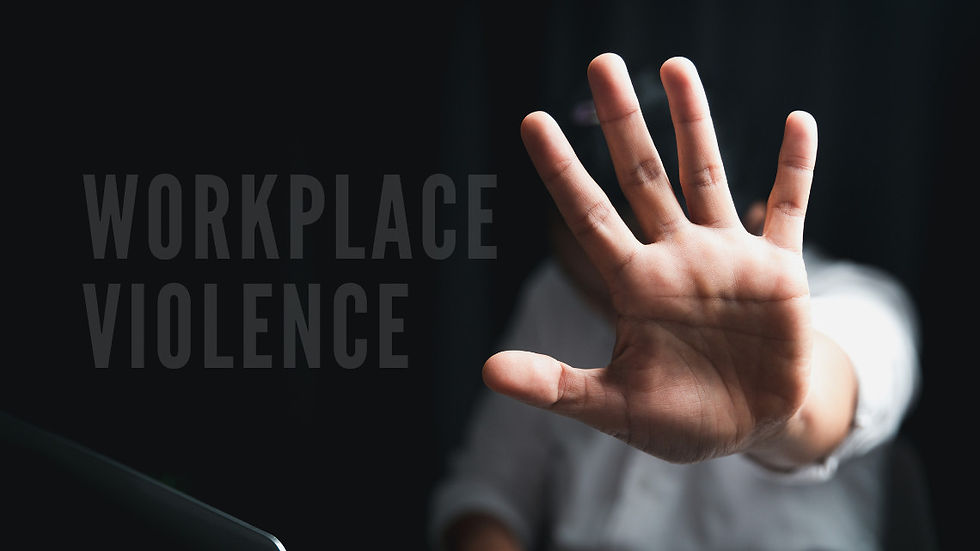Workplace Violence Is Rising – HR Must Act Now
- Cynthia Jenkins
- Aug 14
- 2 min read

The Numbers You Can’t Ignore
A recent report from Traliant reveals a troubling trend: 30% of U.S. employees say they've witnessed workplace violence, up from 25% in 2024, and 15% report being personally targeted, up from 12% last year (HR Dive+6HR Dive+6HR Dive+6HR Dive+3HR Dive+3New York Post+3). Traliant’s compliance counsel, Bailey Whitsitt, calls it “a wake‑up call for organizations nationwide” and urges that workplace safety must be more than a checkbox—it must be woven into the culture (HR Dive+2New York Post+2).
Why It Matters for HR
Workplace violence, defined broadly by OSHA as any act of physical violence, threats, harassment, or intimidation, poses a serious threat to employee well‑being, morale, and organizational culture (Wikipedia). As HR professionals, this phenomenon isn’t just a compliance concern—it’s a human concern demanding proactive leadership.
3 Steps HR Can Take Now
1. Move from Policy to Culture
Policies alone won’t suffice. Safety must be a core value. Encourage reporting, support affected employees, and ensure consistent leadership messaging. Training—while improving, with about 70% of workers trained—still leaves a third of your workforce unprepared (HR Dive+1).
2. Strengthen Incident Protocols
Effective prevention requires more than awareness—it needs structured systems:
Deploy updated incident logs to monitor patterns.
Review and evolve response procedures regularly.
Conduct hazard assessments, especially in high‑risk areas like hospitality, where 46% of employees report having witnessed violence (The Times+15HR Dive+15UC Davis Human Resources+15HR Dive).
3. Invest in Support and Resilience
Workplace violence leaves lasting emotional effects, especially on healthcare workers, where violence can contribute to PTSD, burnout, and turnover (Wikipedia+1). Provide safe debrief spaces, counselling, and resilience programs. Strengthen support systems so employees know they’re not alone.
The ROI of Prevention
Boost retention: Employees are more likely to stay where they feel psychologically secure.
Reduce liability: Documented prevention plans and incident records can protect the organization legally.
Enhance reputation: A safety‑first environment attracts talent and earns employee trust.
Looking Ahead: Legislative and Sector Trends
California is already leading, with its law requiring workplace violence prevention plans, logs, and annual training—effective July 1, 2024 (HR Dive).
At the federal level, the proposed Workplace Violence Prevention for Health Care and Social Service Workers Act (H.R. 2663) would require OSHA to develop national standards for certain industries (Wikipedia). Staying ahead of these developments is essential for compliance and employee safety as pressure grows.
Final Thoughts
The rise in workplace violence is more than unsettling—it's unacceptable. As HR leaders, we have both a duty and an opportunity to lead meaningful change. By championing safety, supporting employees, and staying ahead of regulatory shifts, we can foster workplaces where everyone feels secure and respected.
Let’s turn this wake-up call into action.




Comments